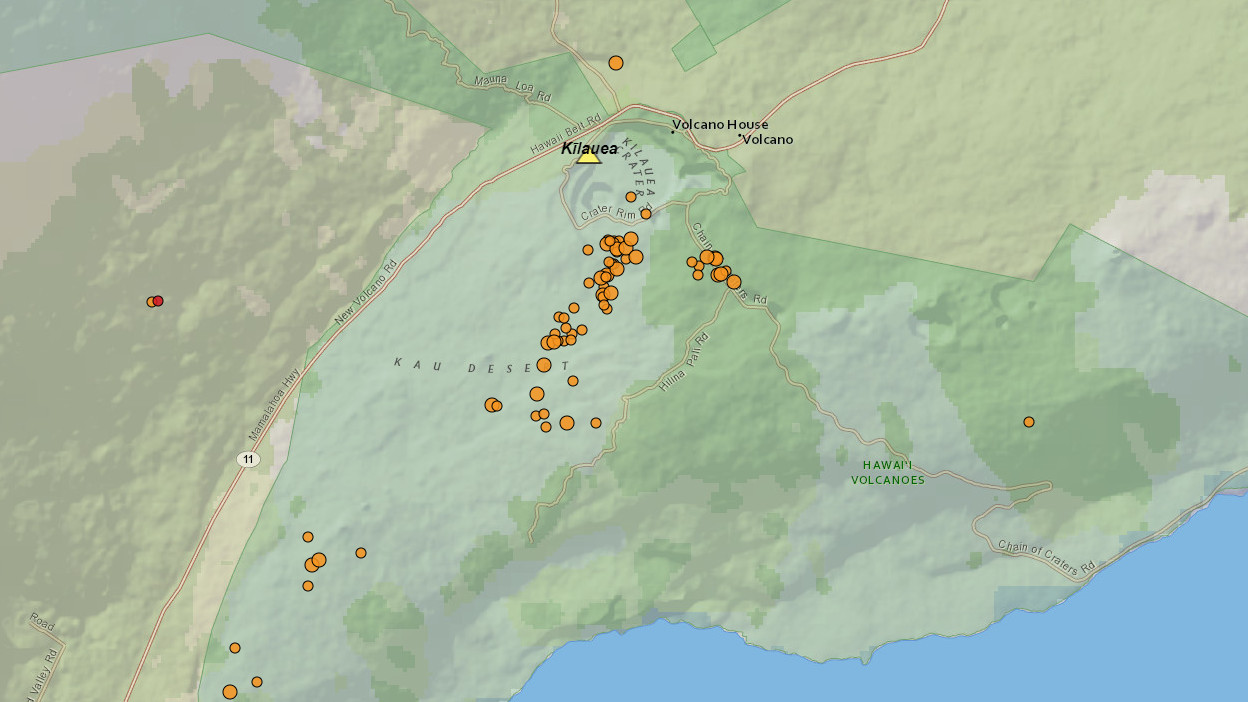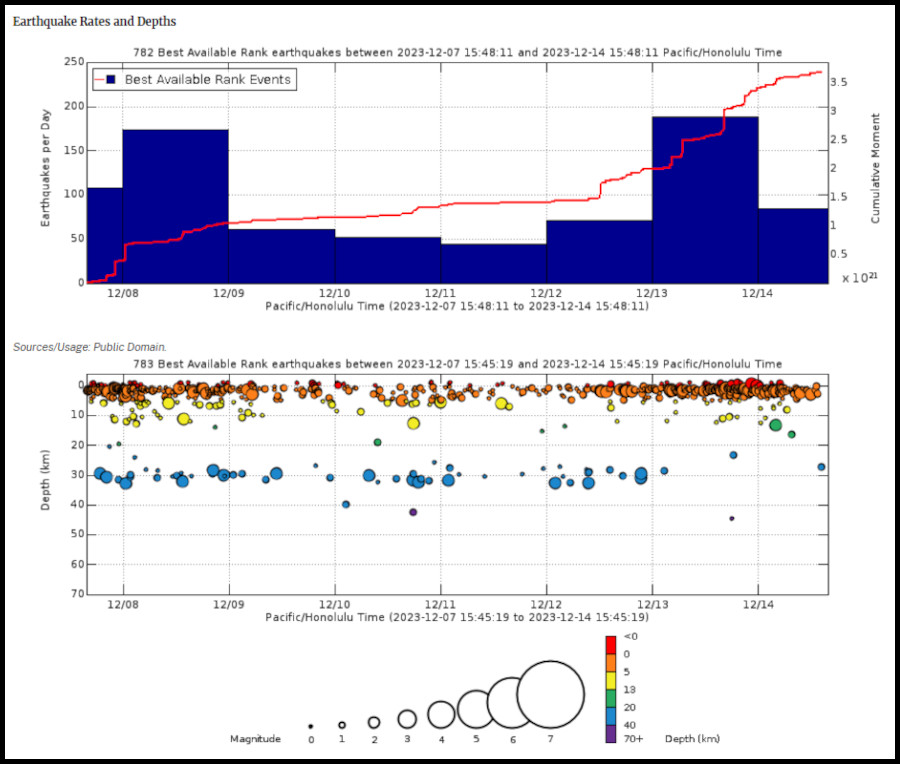(BIVN) – Kīlauea volcano is not erupting. Scientists report there has been moderate seismicity in the summit region, upper East Rift Zone, and Southwest Rift Zone over the past day. Activity already appears to have settled down, compared to the spike in earthquakes that was observed from Wednesday afternoon into early Thursday morning.
The Kīlauea Volcano Alert Level remains at ADVISORY. There are currently no signs of an imminent eruption at Kīlauea, but the USGS Hawaiian Volcano Observatory continues to say the summit region remains unsettled and eruptive activity could occur in the near future with little or no warning.
No unusual activity has been noted along the middle and lower sections of Kīlauea’s East Rift Zone.
In Hawaiʻi Volcanoes National Park, only the Mauna Iki Trail is closed due to the volcanic unrest.
From the Thursday update posted by the USGS HVO:
Summit Observations: Seismicity in Kīlauea’s summit region has seen a slight increase since Tuesday, December 12. Activity has been focused in two clusters just south and southeast of Kaluapele, the volcano’s summit caldera. Most of these earthquakes have had magnitudes below M2.0, but a handful of events have occurred in the M2.0–M3.0 range. Seismicity has not reached the levels that immediately preceded recent summit eruptions at Kīlauea.
The Uēkahuna tiltmeter—located northwest of the caldera—began tracking slight inflation of the summit late yesterday evening, followed by a quick transition to deflation early this morning. The Sand Hill tiltmeter—located southwest of the caldera—has tracked northwest-directed tilt since Monday, December 11. This is indicative of inflation to the south of Kaluapele, and it was a commonly observed signal in October and November 2023. Overall, Kīlauea’s summit region remains at a high level of inflation; relative tilt is above the level reached prior to the most recent eruption in September 2023, and it is higher than at any time since the 2018 eruption.
Sulfur dioxide (SO2) gas emission rates remain low. Field measurements indicated an SO2 emission rate of approximately 70 tonnes per day on December 5, which was similar to measurements in October and November.
There are currently no signs of an imminent eruption at Kīlauea, but the volcano’s summit region remains unsettled, with a high level of inflation and continued seismic activity. The onsets of previous summit eruptions have been marked by strong swarms of earthquakes caused by magma moving towards the surface 1–2 hours before the appearance of lava. This type of earthquake activity is not being detected at this time.



by Big Island Video News4:04 pm
on at
STORY SUMMARY
HAWAIʻI VOLCANOES NATIONAL PARK - A spike in the number of earthquakes was registered on the USGS HVO website on Wednesday evening, and moderate seismicity continued into Thursday.